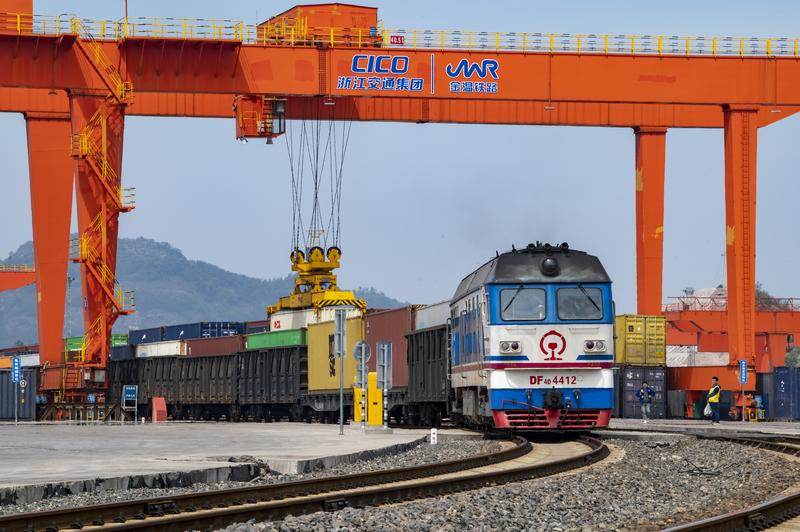 A freight train arrives at Wenzhou Port, Zhejiang province. Its cargo will be shipped to Southeast Asian countries under a sea-rail combined transportation mode. (HU XIAOFEI / FOR CHINA DAILY)
A freight train arrives at Wenzhou Port, Zhejiang province. Its cargo will be shipped to Southeast Asian countries under a sea-rail combined transportation mode. (HU XIAOFEI / FOR CHINA DAILY)
China's inland cities will increase their use of the country's railroad links to seaports in order to boost exports to other signatory economies of the Regional Comprehensive Economic Partnership agreement, which will help sustain the country's foreign trade growth this year, said government officials and market observers.
In recent years, inland provinces such as Hunan, Jiangxi, Guizhou and Hubei have been exploring various options to improve their exports and make them more sustainable. Cities in such provinces have been keen to establish transportation linkages to the ports in Shanghai and coastal provinces. They have relied on existing railroad networks to transship their products to other RCEP markets.
Inland cities, including Nanchang in Jiangxi province and Guiyang in Guizhou province, have operated a number of freight train services to export goods to countries like Indonesia, Malaysia, Vietnam, Laos, Thailand, Singapore, Japan and the Republic of Korea in recent months. Their railway containers are reloaded at ports like Wenzhou in Zhejiang province and Qinzhou in the Guangxi Zhuang autonomous region for the ocean voyage.
As the RCEP has spurred trade among signatory countries since January 2022, Huaihua in Hunan province has operated Huaihua-Laos and Huaihua-Vietnam cargo train services as well as the weekly Huaihua-Beibu Gulf Port rail-sea combined transport operations. They have effectively boosted the exports of China's central provinces to other RCEP countries, said Li Chunqiu, the city's mayor.
In January, the city operated 27 cross-border cargo services to export 1,356 containers with 104.27 million yuan ($15.13 million) worth of products like consumer goods, toys, outdoor products, apparel and furniture, to member economies of the Association of Southeast Asian Nations. On the return leg, such services also brought in rice, coffee, tea, industrial materials and other agricultural products from the trading partners.
China's trade with ASEAN, the country's largest trade partner, surged 9.6 percent year-on-year to 951.93 billion yuan in the first two months of this year, accounting for 15.4 percent of the country's total, while its trade with other RCEP members rose 3.1 percent on a yearly basis, data from the General Administration of Customs showed.
Addressing a news conference in Beijing on Monday, Premier Li Qiang said China will further expand opening up this year in alignment with high-standard international trade rules, and will open its door wider to the world with a better business environment and services.
The robust economic cooperation among RCEP economies would inject a much-needed impetus into the global economy that has been facing multiple pressures ranging from waning global demand to geoeconomic shocks, said Li Muyuan, executive vice-president of the Beijing-based China Container Industry Association.
After opening a shipping route to Vietnam last year, Taizhou Port in Zhejiang province went in for a shipping route to Japan on Monday, to help local exporters better expand their presence in other RCEP markets, according to information released by Hangzhou Customs.
As global economic growth slows down and demand for goods softens in many countries, the RCEP is poised to be a key growth driver for China and many economies in the Asia-Pacific region this year, as many of them seek to enjoy more preferential tariff dividends and partly reduce their reliance on external demand, said Cao Erbao, a professor of foreign trade at Changsha-based Hunan University.
Even though the RCEP is not a panacea for economic challenges, it represents a significant step toward greater regional integration and cooperation, said Jiang Ruiping, a professor of economics at China Foreign Affairs University in Beijing.
Contact the writers at zhongnan@chinadaily.com.cn


